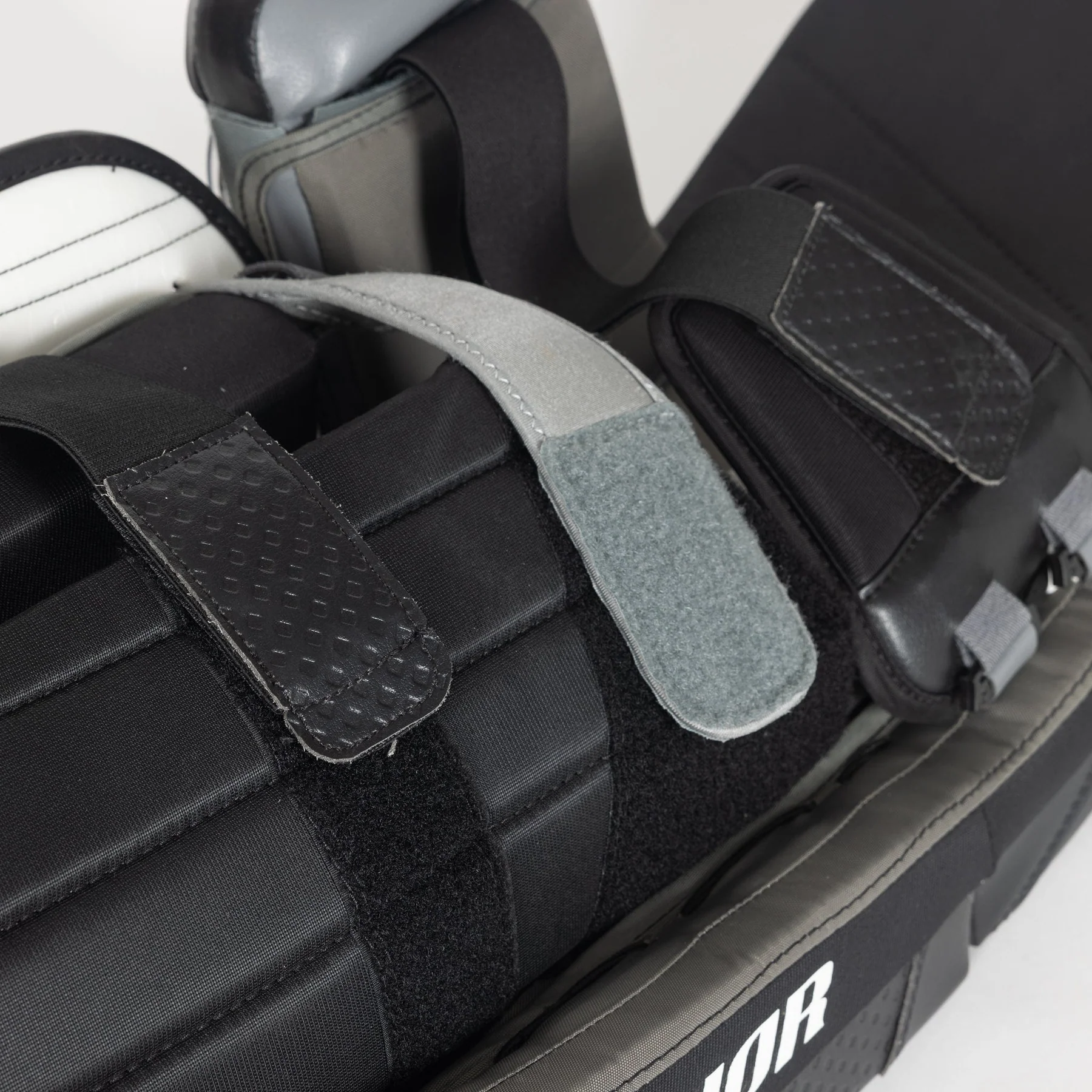gear fitting - goalie pads
- mekenzieerickson

- Jul 30, 2024
- 4 min read
In the final instalment of my gear fitting series, we arrive at everyone's favourite item - the leg pads. Best for last, as promised!
This post will be a little longer and fairly in depth as leg pad sizing is highly personal and has many variables in getting the correct size for your style. The broken record continues though - unnecessary up sizing leg pads will impede a goalie's movement more than any other piece of equipment. However, as with some other pieces, growing goalies can get away with a little bit of space, and will cover the best ways to do so.
Some manufactures like Bauer have moved away from traditional inch sizing (such as 34+1) and listing pads in Extra Small through 2XL, though they now have an inch size equivalent listed on the pad again. Most retailers will have a size gauge in house and will measure a rough floor to knee height (which differs from the below method). These will still 'convert' to an inch size approximately. More so than other pieces of gear, sizing can vary quite heavily from brand to brand (and even in different lines of the same manufacture, owing to boot and knee breaks, strapping etc.), so it is imperative that you take your time sizing leg pads. Pads will also follow the Youth, Junior, Intermediate, and Senior sizing groups.
If there was a time to bust out the tape measure and size up you limbs, this is it. There are many different methods and formulas out there to get your approximate size and all will work. I like the following (make sure to be barefoot and bend your knees slightly):
1. Record your skate size (not shoe!)
2. Measure from the middle of your ankle to the middle of your knee cap.
3. Measure from the middle of your knee (still slightly bent) to roughly the middle of your thigh, or where you would like your pad to sit.
4. Add these measurements together and voila! Your approximate pad base size (not including plus size).
So, for example:
8 + 16 + 6 = 32 inch base size, approximately. Remember, brands can vary in their measurements, so use this as a starting point to narrow your scope a little. Branch up or down appropriately if the base size you find isn't quite right. Most manufactures have moved away from large thigh rises, with the standard being about plus 1. There are custom options and some manufactures such as Vaughn will still offer plus 2 at retail, and Bauer lists some of their pads as a stock plus 1.5.
Now that you have your base size, you're set to try on some gear! Remember to bring your skates, knee pads, and pants to make sure it all integrates together nicely. Put the pads on so you are comfortable with the strapping. With your skates on, bring your feet together so the pads stand straight up - just like the old school stand up goalies. The pads should not come past your hips, and ideally sit roughly mid/upper thigh. A growing goalie can get away with a slightly taller pad, but they should still not surpass the hips. If it interferes with skating or movements, stick with an appropriate sized pad.

Now move in to your ready stance, drop in to your butterfly and move through a range of save selections and motions. While in your butterfly, bring your feet all the way together behind you (think Giguiere-esue saves!). In a full grown goalie or someone not leaving space to grow, your knee cap will be directly in the middle of the knee stack. For growing goalies, the knee will still be centred, but will be 1-1.5 inches below the exact middle. Ensure while standing and in the butterfly that the ankle is at the boot break and not impeded in it's range of motion.
Variances in styles, construction, and of course, the goalie themselves will affect how a certain pad fits a goalie. Stiffer 'butterfly' pads may sit higher than a softer 'hybrid' style pad (as we can debate in another topic, antiquated terms that should be on the way out!), and specifically boot length and angles will affect the height significantly. The depth of the leg channel, particularly at the boot break, will also affect how much you 'sink' into a pad, and thus moving you up or down on the knee block - think a new True boot bottom vs. an older EFlex boot/leg channel.

As well, strapping preferences and options can make a shorter pad sit high or a taller pad sit low. 'Lundy' loops will make a pad sit up, where as a calf strap style such as the Bauer Supreme line may make a pad sit lower for example (stay tuned for a multi-part deep dive on pad mechanics!). Another factor to consider is break in, as pads may sag over time. Used pads are a great option for value and not having to worry about changes in the pad size over time.
Pads are no small purchase. They are the biggest factor in to your style of play and will see many butterflys and pucks over their lifetime. With the huge differences in brands and lines, make sure to take your time and get the perfect fit for you and the way you play.
If you have any questions on fittings, repairs, or modifications, drop me a line today! I am more than happy to give you advice, quotes or just to chat about all things goalies. Looking for used gear? Check the tab up top for available inventory!
happy tending,
mek































Comments